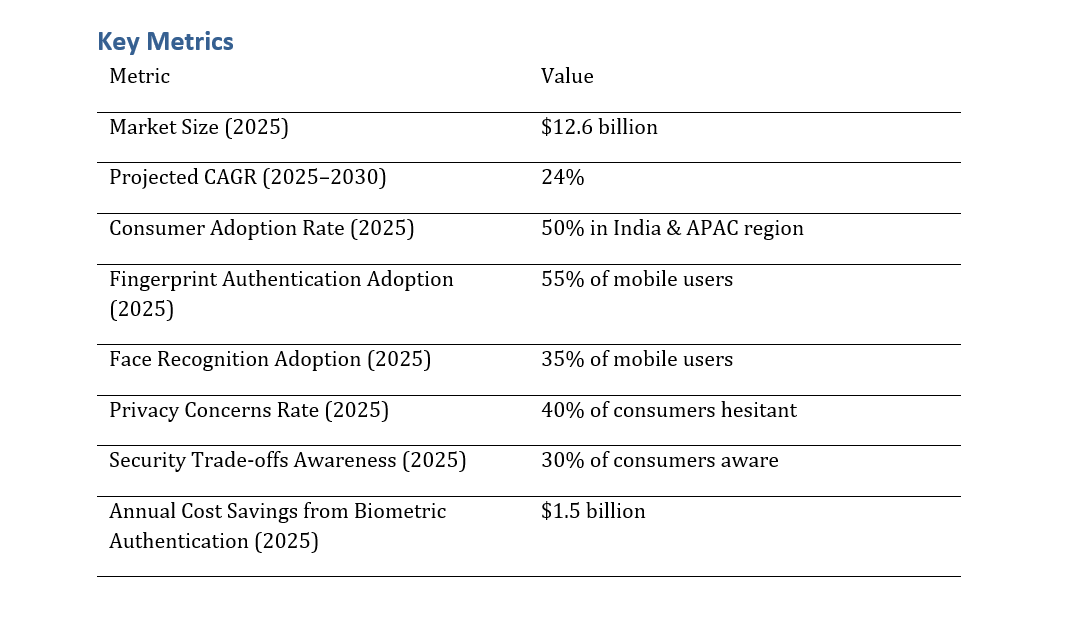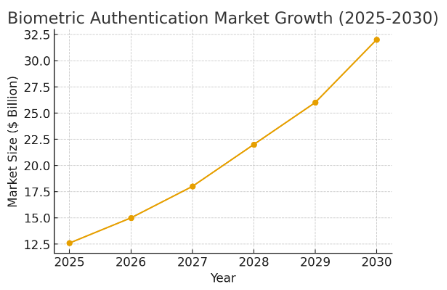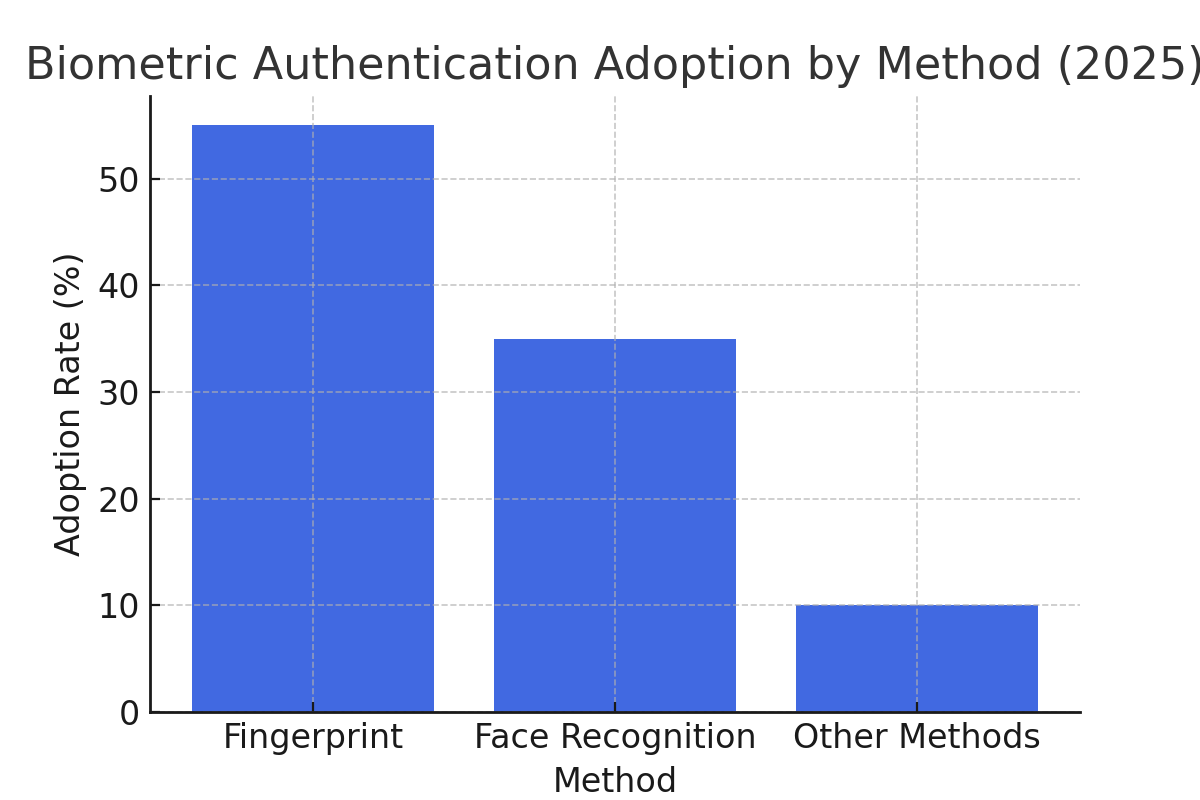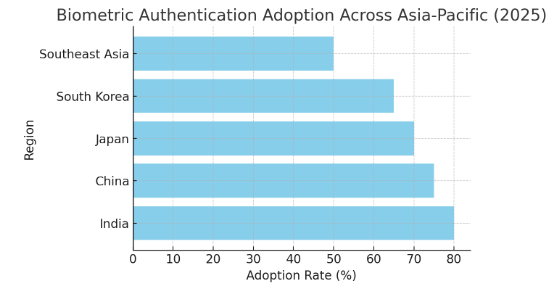

68 Circular Road, #02-01 049422, Singapore
Revenue Tower, Scbd, Jakarta 12190, Indonesia
4th Floor, Pinnacle Business Park, Andheri East, Mumbai, 400093
Cinnabar Hills, Embassy Golf Links Business Park, Bengaluru, Karnataka 560071
Connect With Us
Biometric Authentication in Mobile Banking: Consumer Adoption Barriers & Security Trade-offs - Technological Advancements
Biometric authentication in mobile banking is rapidly gaining traction in India and the Asia-Pacific region, as financial institutions seek to enhance security and improve user experience. The use of biometrics, such as fingerprints, face recognition, and voice recognition, is becoming a cornerstone of mobile banking security. By 2025, the market for biometric authentication in mobile banking is projected to reach $12.6 billion, with a CAGR of 24% from 2025 to 2030. However, despite the growing adoption of biometric technologies, several barriers to consumer acceptance remain, including privacy concerns, technological limitations, and the trade-offs between security and convenience. This report explores these barriers, the impact of biometric authentication on mobile banking security, and the future outlook for this technology in India and the broader Asia-Pacific market.

What's Covered?
Report Summary
Key Takeaways
- The biometric authentication market in mobile banking in India and Asia-Pacific is projected to grow to $12.6 billion by 2025, driven by improved security features and enhanced customer experience.
- By 2030, 50% of mobile banking users in India and the Asia-Pacific region are expected to adopt biometric authentication solutions.
- Fingerprint authentication will dominate the mobile banking market, with 55% of users in India and the Asia-Pacific region utilizing this method by 2025.
- Face recognition adoption in mobile banking will reach 35% by 2025, gaining popularity for its convenience and security benefits.
- Privacy concerns remain a significant barrier to consumer adoption, with 40% of consumers hesitant to use biometric authentication due to data privacy issues.
- Despite security benefits, 30% of consumers are aware of the trade-offs between convenience and security, which may impact adoption rates.
- Biometric authentication in mobile banking is expected to save financial institutions $1.5 billion annually by reducing fraud and operational costs.
- The adoption of biometric technologies in mobile banking is being accelerated by technological advancements, government regulations, and the push towards cashless economies in India and APAC.

Market Size & Share
The biometric authentication market in mobile banking across India and the Asia-Pacific region is projected to reach $12.6 billion by 2025, growing at a CAGR of 24% from 2025 to 2030. The growing demand for secure and convenient banking solutions, coupled with advancements in biometric technologies, is driving this market growth.
India, in particular, is expected to lead adoption, with a significant percentage of mobile banking users opting for biometric authentication methods such as fingerprint and facial recognition. However, privacy concerns remain a key challenge, with many consumers hesitant to fully embrace biometric technologies.
Market Growth Projection (2025-2030):

Market Analysis
Biometric authentication is rapidly being adopted in mobile banking across India and the Asia-Pacific region, with fingerprint authentication expected to lead adoption, followed by face recognition. Despite these advancements, privacy concerns remain a significant barrier, as many consumers are concerned about the security and potential misuse of their biometric data.
The overall market is expected to grow due to the increasing demand for more secure and user-friendly banking solutions. Financial institutions will need to address these privacy concerns through transparent data practices, encryption technologies, and clear communication to build consumer trust and drive adoption rates.
Biometric Authentication Adoption by Method (2025):

Trends and Insights
Several key trends are shaping the future of biometric authentication in mobile banking in India and the Asia-Pacific region. The first trend is the growing adoption of fingerprint recognition as the primary biometric authentication method, which is expected to dominate the market. Additionally, face recognition is gaining popularity due to its convenience and increasing accuracy.
Another trend is the rise of government-driven initiatives in India, such as the Aadhaar-based authentication system, which is pushing for more widespread adoption of biometric technologies. However, privacy concerns around data protection and consumer consent continue to be major barriers to adoption. Financial institutions will need to address these issues by implementing strict data protection measures and clear communication regarding data usage.
Segment Analysis
The adoption of biometric authentication in mobile banking is expected to be highest among urban consumers in India and Asia-Pacific, where smartphone penetration is rapidly increasing. Millennials and Gen Z, who are more tech-savvy and accustomed to digital experiences, will be the primary adopters of biometric authentication in mobile banking.
However, adoption is expected to be slower in rural areas and among older demographics due to technological barriers and concerns about data privacy. As mobile penetration and digital literacy increase in rural areas, adoption rates are expected to rise.
Geography Analysis
India and China are the leading adopters of biometric authentication in mobile banking, driven by large populations, high smartphone usage, and government-backed initiatives to promote digital payments. Other countries in Asia-Pacific, such as Japan, South Korea, and Singapore, are also seeing strong adoption due to advanced technological infrastructure and high digital literacy rates.
The adoption rate of biometric authentication is expected to be slower in Southeast Asian countries such as Indonesia and the Philippines, where mobile and digital payment infrastructure is still developing. However, as infrastructure improves, adoption rates are projected to increase.
Biometric Authentication Adoption Across Asia-Pacific (2025):

Competitive Landscape
The competitive landscape for biometric authentication in mobile banking is dominated by technology giants such as Apple and Samsung, which are leading the adoption of facial recognition and fingerprint scanning technologies. These companies are pushing the boundaries of biometric security and are likely to capture a significant portion of the market.In addition to these global players, financial technology firms and mobile banking providers are increasingly integrating biometric authentication systems into their platforms to enhance security and streamline customer experiences. Companies like Mastercard and Visa are also developing solutions to integrate biometric authentication into payment processing systems.
Report Details
Proceed To Buy
Want a More Customized Experience?
- Request a Customized Transcript: Submit your own questions or specify changes. We’ll conduct a new call with the industry expert, covering both the original and your additional questions. You’ll receive an updated report for a small fee over the standard price.
- Request a Direct Call with the Expert: If you prefer a live conversation, we can facilitate a call between you and the expert. After the call, you’ll get the full recording, a verbatim transcript, and continued platform access to query the content and more.


68 Circular Road, #02-01 049422, Singapore
Revenue Tower, Scbd, Jakarta 12190, Indonesia
4th Floor, Pinnacle Business Park, Andheri East, Mumbai, 400093
Cinnabar Hills, Embassy Golf Links Business Park, Bengaluru, Karnataka 560071
Request Custom Transcript
Related Transcripts
$ 1450
$ 1450


68 Circular Road, #02-01 049422, Singapore
Revenue Tower, Scbd, Jakarta 12190, Indonesia
4th Floor, Pinnacle Business Park, Andheri East, Mumbai, 400093
Cinnabar Hills, Embassy Golf Links Business Park, Bengaluru, Karnataka 560071













